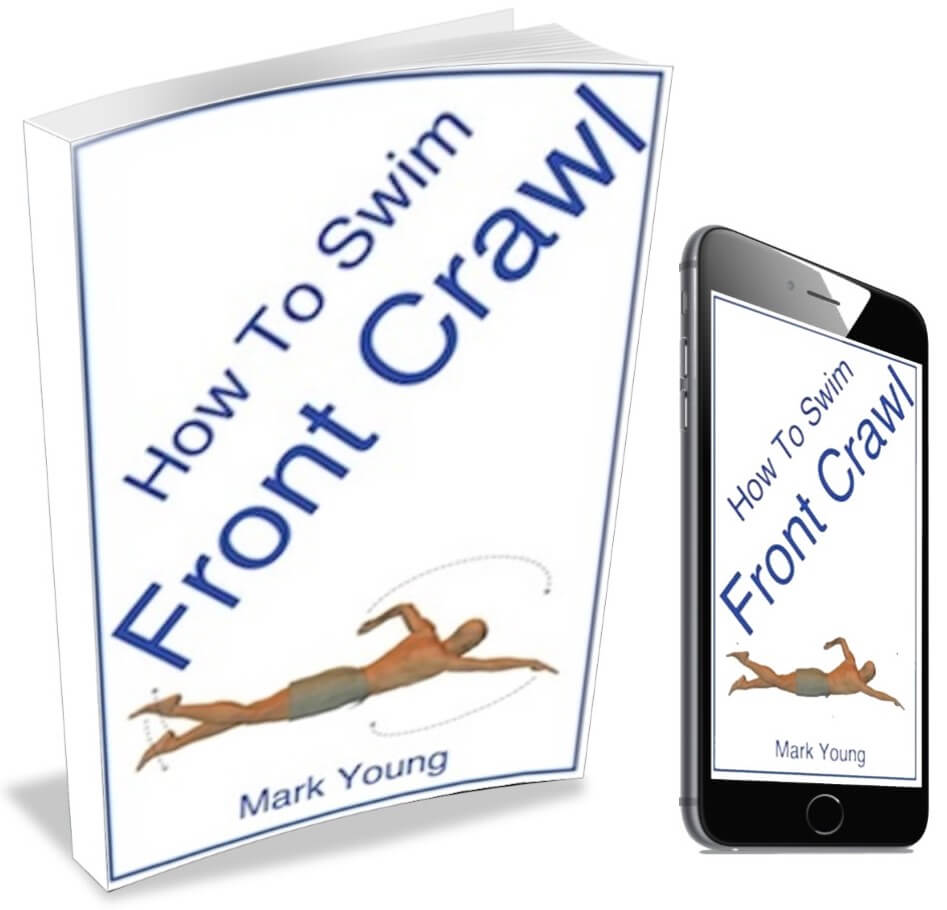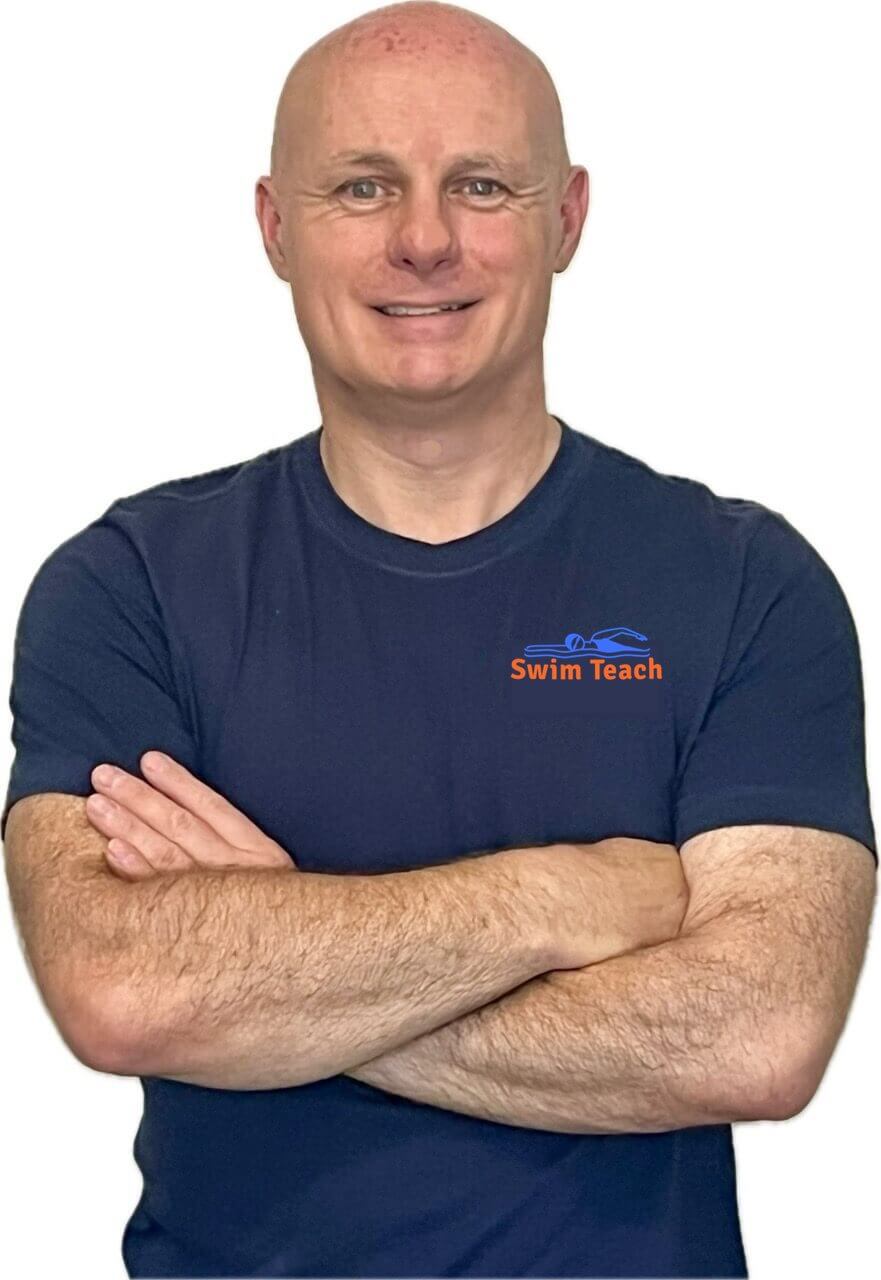- Swim Teach Home
- front crawl
- Front Crawl Breathing Timing
- When I Use My Arms In The Front Crawl My Feet Stop Kicking
When I Use My Arms In The Front Crawl My Feet Stop Kicking
When I use my arms in the front crawl, my feet stop kicking.
Thanks for getting in touch. Your problem is a common one, and it is a question of coordination.
The timing of front crawl arms and legs varies from person to person, depending on the distance to swim.
Each arm cycle should have six leg kicks (2 arm pulls). A slower leg kick, using four kicks per arm cycle, can be used and can be reduced right down to one kick per arm pull. In the case of this ‘one beat cycle,’ the leg kick provides very little propulsion and kicks to balance the arm pulls. This pattern is used a lot by long-distance swimmers to save energy.
However, if your legs stop kicking completely, then that is a completely different matter!
Taking into account the different timing patterns I’ve mentioned so far, you should aim for a ‘one beat cycle’, and try to get your leg kicks to balance your arm pulls rather than trying to get your legs to kick faster than your arms.
As your problem is coordination-related, getting your legs to kick faster than your arms pull will only make matters worse and become even more frustrating.

Start by gently holding a few floats under your arms and kicking your legs. ‘Ok, I can do that easily’, I hear you say. Then take one float away. Hold one float in one hand and again begin to kick your legs. Steady speed, face down in the water. Then start to pull with the arm that's not holding the float. A slow, steady arm pull and maintain your leg kick.
The act of only using one arm can sometimes help to maintain some focus on your legs and help to keep them kicking. If you find they are still stopping, try to kick once in time your arm pulls.
Performing one kick in time with one arm pull should be easier than constantly maintaining a quicker leg kick.
Keep practising until your legs kick once in time with your arms pull. Change arms and try the other side. Once you get the hang of it, try the full stroke without and floats. Both arms with alternating pulls, and your legs kick simultaneously as the opposite arm pulls. In other words, the right arm pulls, the left leg kicks one kick and so on.
This arm pull and leg kick pattern is a perfectly acceptable way of swimming front crawl, and if you practice it in slow motion at first, you will soon find it becomes second nature.
HOW TO SWIM FRONT CRAWL EBOOK: everything you need to master front crawl swimming stroke. 22 easy drills that focus on each part of front crawl technique. From body position to breathing and timing. Decades of teaching experience all packaged into 1 easy file. Download to your device and master front crawl TODAY! (click here for an INSTANT preview).
Don't miss out! Click here for more details on how to get your copy.
I Lose My Front Crawl Technique When I Get Tired
I lose my front crawl technique and kick when tired. The first ten lengths are ok, but after that, when I get tired, it's all gone. Please help.
Thanks for contacting me with a question. A question I might add is that I am asked a lot!
Losing your technique because of tiredness is very common, and as front crawl is a high energy-consuming swimming stroke, it doesn’t take long before it all falls apart. Ten lengths is not bad going.
Here are a few things to think about that might help you.
Firstly you mentioned you kicking. Be mindful of how much kicking you are doing. It is common to kick far more than you need to, especially over a long distance.
Remember, the power and propulsion for the front crawl come mainly from the arm action. Propulsion is generated from the leg kick but nowhere near as much as from the arms.
Watch a long-distance front crawl swimmer, for example, a triathlete. Each leg kicks once for every arm pull, serving less as propulsion and more as a counterbalance to the arm actions to help keep the stroke as a whole balanced and even.
On the other hand, take a short distance front crawl sprint, over 50 or 100 meters. The legs kick with enormous speed and power to provide maximum propulsion and assistance to the arms. All energy is usually spent by the end of this short distance.
Conclusion: fewer leg kicks equal energy saved - the energy you will need to swim longer.
Secondly, be mindful of your breathing and how often you breathe. I will assume that you exhale into the water (the easiest and most natural method) and not hold your breath, which only makes you more tired.
Once again, the swum distance will dictate the frequency you need to breathe. Longer distances more often and shorter distances less. It is all too easy to set off from the start and get the pace and frequency of the breathing wrong, despite what might feel right at the time, only to catch you out later in the swim.
Breathing every stroke or every other stroke will help to keep a steady pace and hopefully allow you to last longer. Bilateral breathing (alternating the side you breathe to be taking a breath every three arm pulls) is a nice, even and steady breathing pattern. However, even this cannot be maintained over long distances. Taking a breath every stroke cycle will cover longer distances, which again you will see if you watch any long-distance swimmer.
Lastly, there is the age-old problem of fitness. Your fitness and stamina will ultimately dictate how far you can swim before your body tells you it has had enough. Like any exercise, the more you do it, the fitter and stronger you become.
I hope you can take on board the tips above, and with a little extra fitness and stamina, you can take your front crawl beyond ten and maintain your technique.
The Simple Front Crawl Book
I am a member of the Amazon Associates Program and I will earn a commission from qualifying purchases at no extra cost to you.




